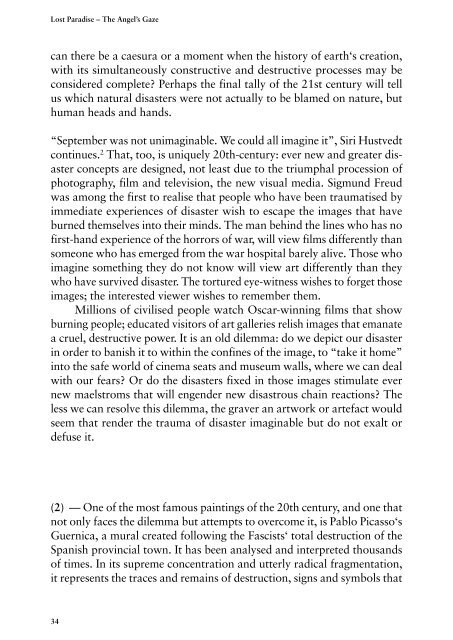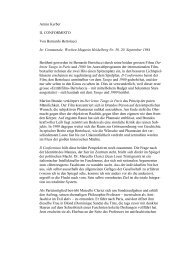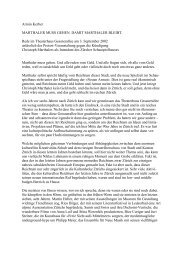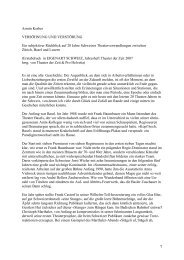Create successful ePaper yourself
Turn your PDF publications into a flip-book with our unique Google optimized e-Paper software.
<strong>Lost</strong> <strong>Paradise</strong> – The Angel’s Gaze<br />
can there be a caesura or a moment when the history of earth‘s creation,<br />
with its simultaneously constructive and destructive processes may be<br />
considered complete? Perhaps the final tally of the 21st century will tell<br />
us which natural disasters were not actually to be blamed on nature, but<br />
human heads and hands.<br />
“September was not unimaginable. We could all imagine it”, Siri Hustvedt<br />
continues. 2 That, too, is uniquely 20th-century: ever new and greater disaster<br />
concepts are designed, not least due to the triumphal procession of<br />
photography, film and television, the new visual media. Sigmund Freud<br />
was among the first to realise that people who have been traumatised by<br />
immediate experiences of disaster wish to escape the images that have<br />
burned themselves into their minds. The man behind the lines who has no<br />
first-hand experience of the horrors of war, will view films differently than<br />
someone who has emerged from the war hospital barely alive. Those who<br />
imagine something they do not know will view art differently than they<br />
who have survived disaster. The tortured eye-witness wishes to forget those<br />
images; the interested viewer wishes to remember them.<br />
Millions of civilised people watch Oscar-winning films that show<br />
burning people; educated visitors of art galleries relish images that emanate<br />
a cruel, destructive power. It is an old dilemma: do we depict our disaster<br />
in order to banish it to within the confines of the image, to “take it home”<br />
into the safe world of cinema seats and museum walls, where we can deal<br />
with our fears? Or do the disasters fixed in those images stimulate ever<br />
new maelstroms that will engender new disastrous chain reactions? The<br />
less we can resolve this dilemma, the graver an artwork or artefact would<br />
seem that render the trauma of disaster imaginable but do not exalt or<br />
defuse it.<br />
(2) — One of the most famous paintings of the 20th century, and one that<br />
not only faces the dilemma but attempts to overcome it, is Pablo Picasso‘s<br />
Guernica, a mural created following the Fascists‘ total destruction of the<br />
Spanish provincial town. It has been analysed and interpreted thousands<br />
of times. In its supreme concentration and utterly radical fragmentation,<br />
it represents the traces and remains of destruction, signs and symbols that<br />
34









